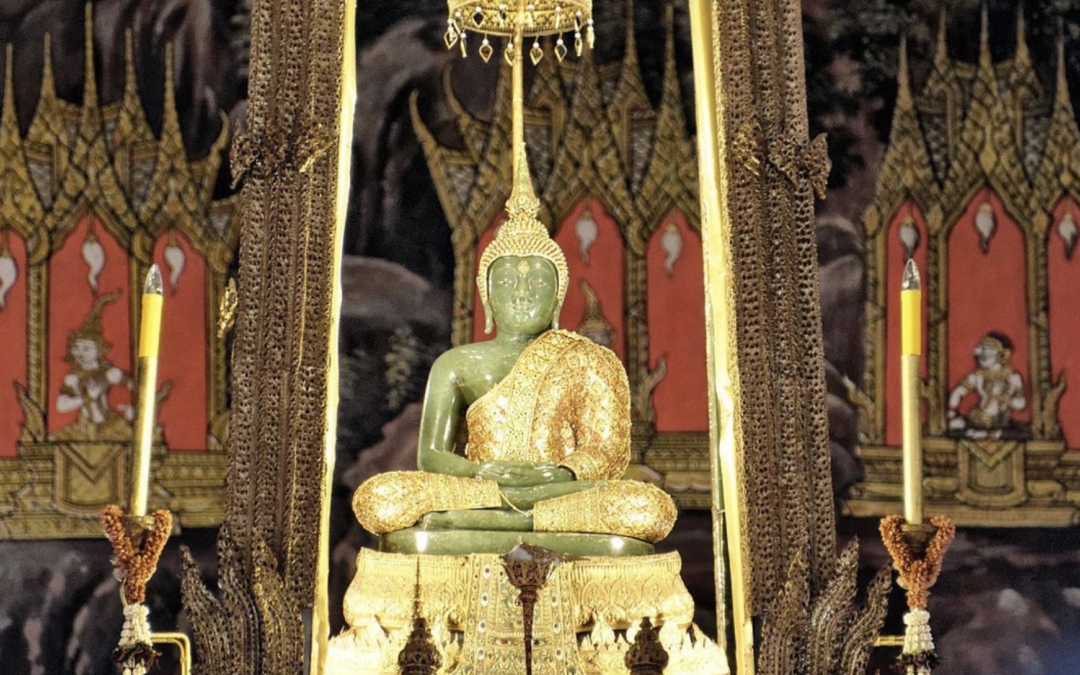Thailand’s Emerald Buddha is a small but precious stone statue that has a rich history shrouded in mystery. It was once located in Chiang Mai at Wat Chedi Luang but after a long journey it was eventually moved to the Grand Palace in Bangkok where it can be seen today.
The exact origins of the Emerald Buddha are uncertain. According to one account, the statue was created in India in 43 BC, it then moved around various locations in India and Sri Lanka, before appearing in Cambodia in the Angkor period.
The Emerald Buddha re-emerged in historical accounts in 1434, when it was discovered in a stupa in Chiang Rai after a lightning strike revealed it. At that time, the statue was covered in plaster to conceal its true value, and it was only after being moved to the abbot’s residence and chipped by accident that the plaster was found to be hiding a valuable jade statue.
The Emerald Buddha was then moved around various cities in Northern Thailand and Laos over the subsequent centuries. It stayed in Laos until 1778 when it was taken and installed in its current location in the Grand Palace in Bangkok.
Despite the statue’s name, the Emerald Buddha is not made of emerald but rather of jade or some other green semi-precious stone.
The Emerald Buddha has a deep cultural and historical significance for the people of Thailand and is considered the protector of the country. It’s one of the most revered religious objects in Thailand. Despite its small size, it has had a big impact on Thai society and culture.


